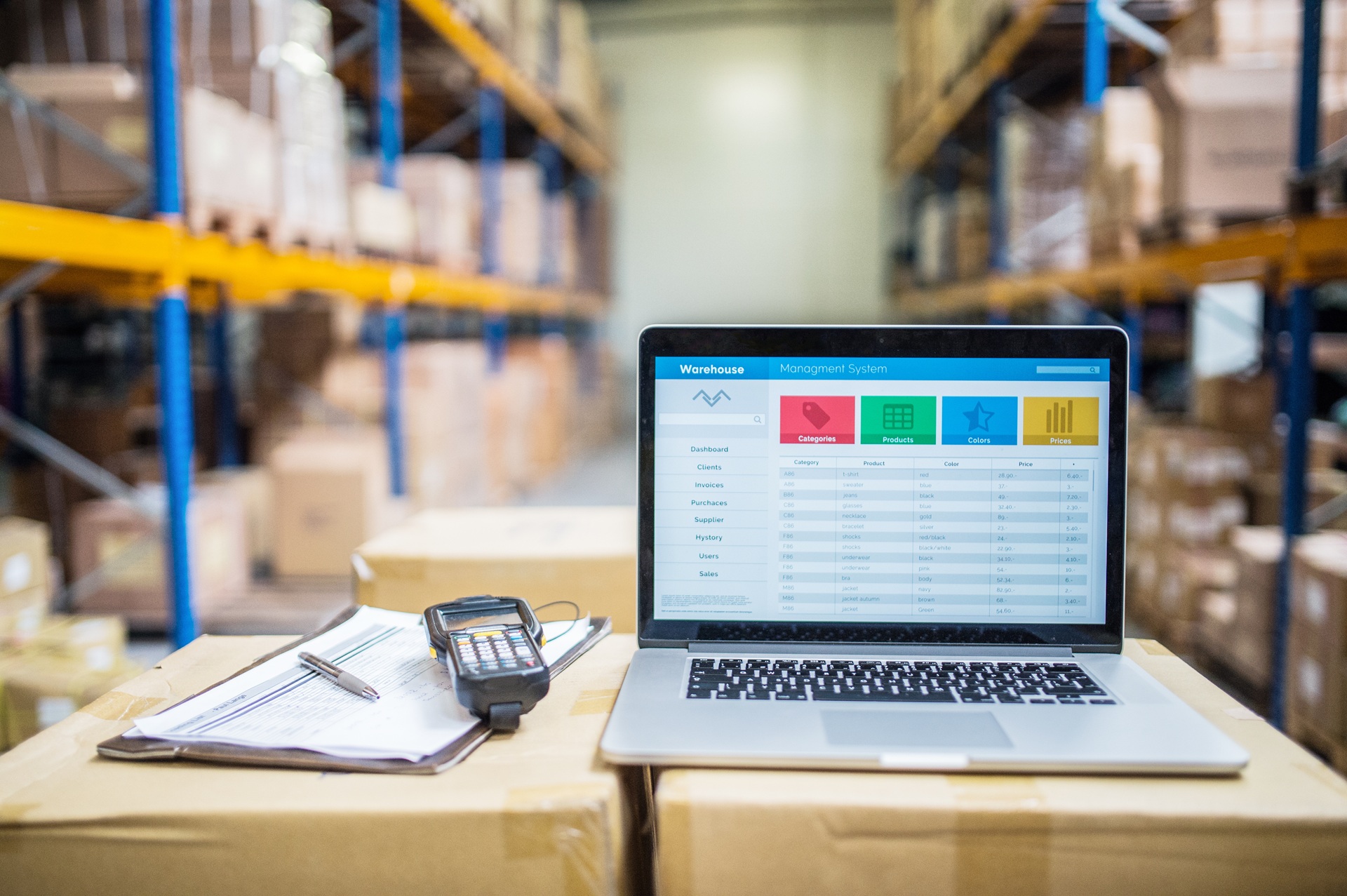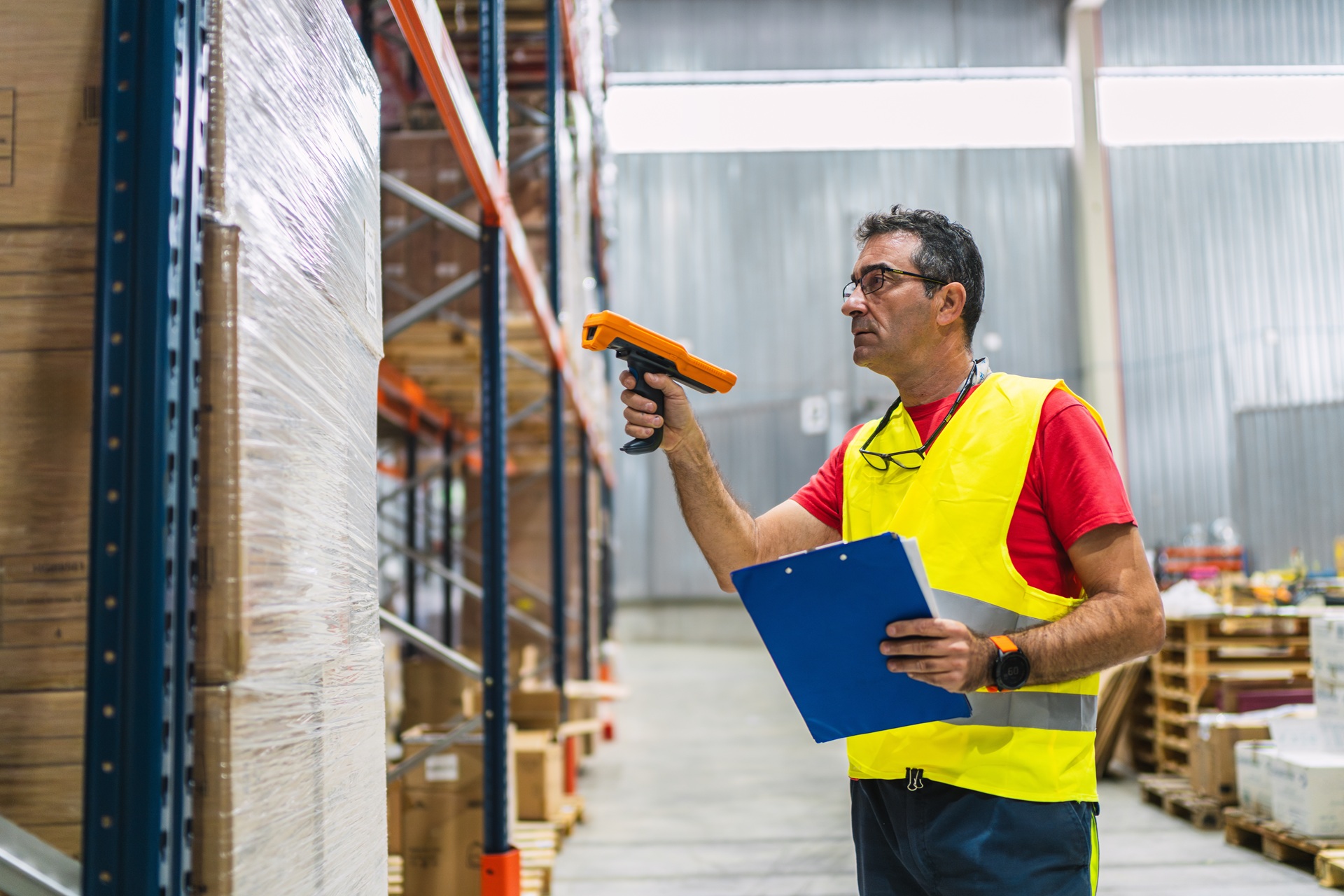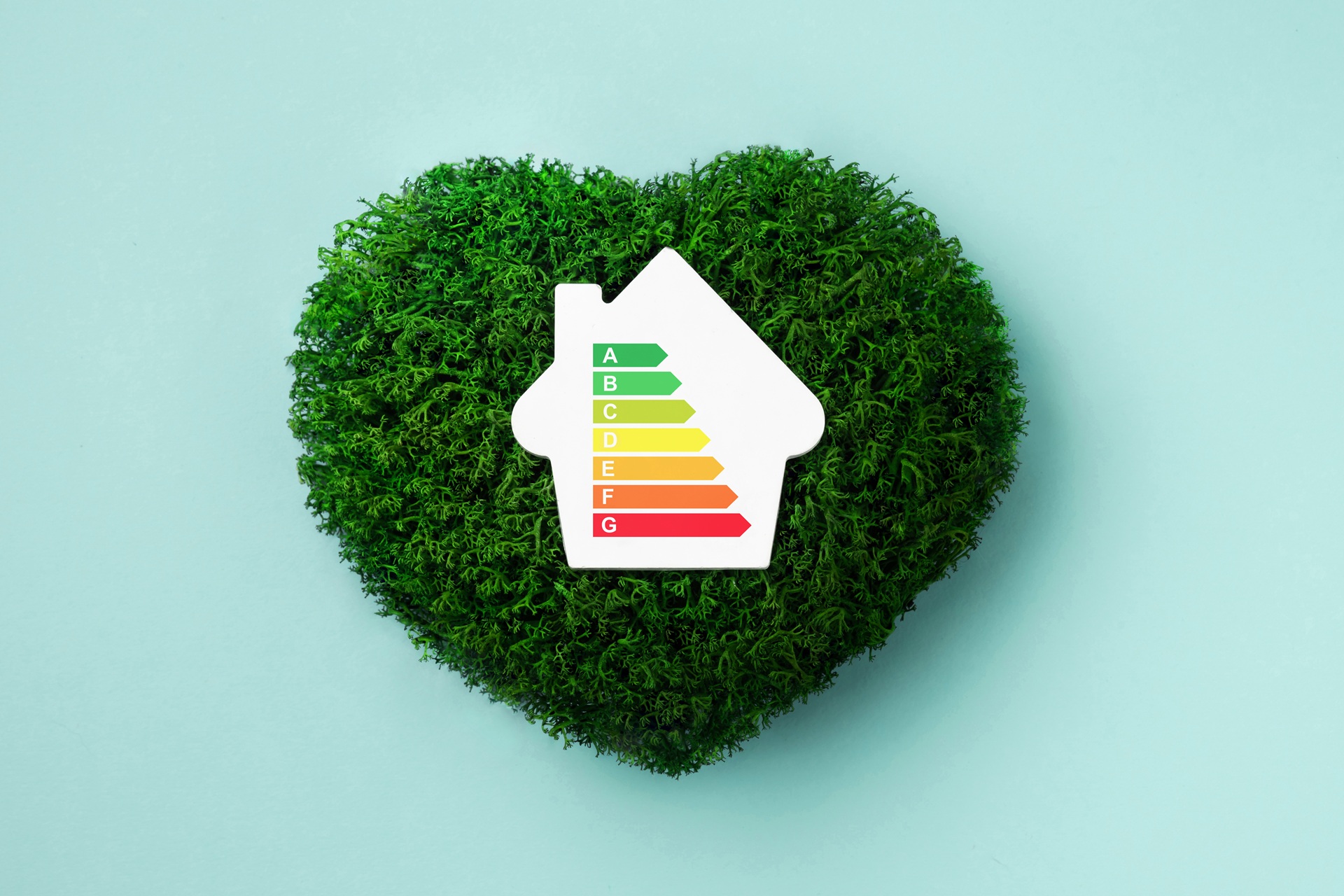Welcome to the smart packaging revolution
Not long ago, the primary role of packaging was protection. Its purpose was to keep products safe, preserve shelf life, and appear attractive on shop shelves. Today, however, it surely can do much more than just that. It can function not only as a container but also as a carrier of data, a digital touchpoint, and a gateway to real-time insight – for both brands and consumers.
Welcome to the age of smart labels.
Smart labelling refers to the integration of digital technologies – most notably RFID UHF and NFC – into physical product packaging. These technologies enable the wireless transmission of data, allowing products to be tracked, authenticated, and interacted with in real time.
In practical terms, a smart label can:
- indicate where a product is within the supply chain;
- verify its authenticity with a tap;
- trigger personalised marketing content; and
- monitor environmental conditions, such as temperature or humidity.
This transformation is not merely technological – it is strategic. As consumer expectations, regulatory demands, and operational complexity continue to grow, companies are increasingly turning to smart labelling as a foundational tool to remain competitive.
The numbers speak for themselves. Global demand for RFID labels continues to rise at double-digit rates. According to IDTechEx, the RFID market exceeded US$14 billion in 2023. Passive RFID tag sales alone surpassed 39 billion units globally. The retail and apparel sectors accounted for nearly two-thirds of that volume – and this is only one part of the picture.
Behind this growth lies a simple truth: labelling is no longer just about what is seen – it is about what is known. That shift is changing everything.
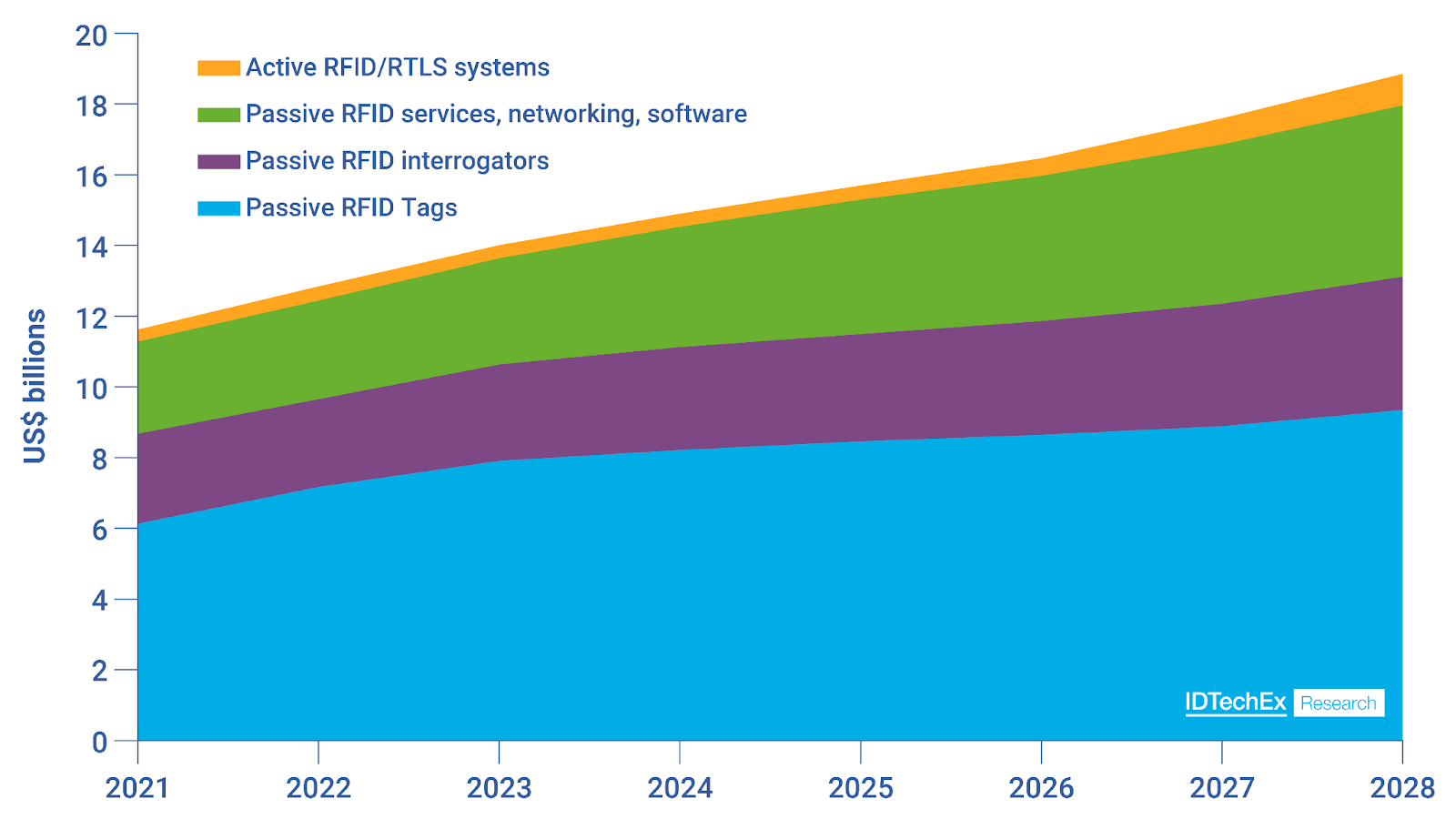
Consumers want truth, not just design
Modern consumers are no longer persuaded by clever packaging or vague claims. They demand proof. They expect transparency. And increasingly, they want that transparency to be accessible – on demand, mobile-friendly, and unfiltered.
This trend is particularly strong among younger demographics, such as millennials and members of Generation Z, who have grown up scanning QR codes, tracking deliveries in real time, and evaluating claims with a sceptical eye. In order to earn their trust, brands must offer more than style – they must demonstrate authenticity and integrity, ideally in ways that are instantaneous and verifiable.
Within this context, smart labelling is not simply a logistical enhancement – it becomes a trust-building mechanism.
Transparency builds loyalty
In industries where product origin, ingredient content, or authenticity are especially sensitive – such as food, personal care, pharmaceuticals, and luxury goods – the ability to verify information instantly and interactively via a label is a competitive advantage.
Consider a consumer scanning an NFC-enabled wine bottle in a shop. Instead of seeing only a brand and a static label, they might be presented with:
- a profile of the vineyard and harvest data;
- authenticity verification, potentially backed by blockchain;
- details of the wine’s journey through the supply chain; or
- food pairing suggestions or serving tips.
This immediate access to trustworthy information builds confidence at the moment of purchase. It answers unspoken questions, reduces hesitation and – in many cases – justifies a higher price point.
From compliance to competitive edge
While transparency is increasingly demanded by customers, it is also becoming legally mandated. Governments across Europe – particularly within the European Union – are introducing stringent regulations around labelling, traceability, and sustainability claims.
The forthcoming Digital Product Passport (DPP), part of the EU’s circular economy strategy, will require certain sectors (such as textiles, batteries, and electronics) to provide digital product records that ensure traceability and facilitate recycling. Smart labels – including both RFID UHF and NFC formats – will play a central role in this infrastructure.
Forward-thinking organisations are already responding. For them, this is not a regulatory burden – it is a competitive opportunity. Early adoption not only ensures compliance, but also enables stronger consumer engagement, improved supply chain transparency, and enhanced brand reputation.
Digital supply chains require digital labels
While consumer-facing benefits often take the spotlight, one of the most transformative applications of smart labelling lies deeper in the value chain: logistics, warehousing, and supply chain management.
Today’s supply chains are global, fast-paced, and increasingly digitised. Brands must manage inventory across factories, warehouses, distribution centres, and retail locations, often in multiple countries and across several time zones. Manual systems, including traditional barcodes, are simply no longer sufficient.
Smart labels – particularly those using ultra-high-frequency (UHF) RFID – provide a scalable and cost-effective way to bring automation, accuracy, and speed to supply chain operations.
Why barcodes are no longer enough
Barcodes have served as the backbone of product identification for decades. However, they have several limitations:
- They require line-of-sight scanning.
- They must be scanned one at a time.
- They are vulnerable to damage, which can render them unreadable.
- They hold only static information.
In contrast, RFID tags do not require line of sight. They can be read through boxes, packaging, and other materials, even at distances of up to 10 metres in warehouse environments. Furthermore, hundreds of RFID tags can be read simultaneously – enabling a forklift passing through a dock door to capture the identity of every item on a pallet in seconds.
This difference in capability results in considerable efficiency gains. In fact, RFID-enabled inventory counts can be up to 25 times faster than manual barcode scans, allowing stock to be checked far more frequently and accurately – even daily.
True end-to-end visibility
The ability to tag products at the item, case, or pallet level creates a rich data trail from production to purchase. This level of visibility offers several critical benefits:
- improved inventory accuracy – which is essential for e-commerce and omnichannel fulfilment;
- fewer stockouts and overstocks, improving service levels and reducing waste;
- real-time tracking of goods in transit;
- detection of bottlenecks or losses in the supply chain; and
- automation of compliance and recall protocols, should quality issues arise.
This is not theoretical. In practice, RFID has been widely adopted by global brands in fashion, electronics, and food logistics. It is used to manage everything from surgical supplies in hospitals to automotive components in factories.
Smart labels do not simply make inventory more visible – they make operations more intelligent. They enable predictive analytics, AI-driven demand forecasting, and automated replenishment models. In short, they allow businesses to see, think, and act faster – across the entire chain.
Major retailers and regulators are leading the charge
One of the clearest signals that RFID and smart labelling are no longer optional comes from the actions of the largest and most influential players in global retail and regulation.
Retail giants such as Walmart, Target, Zara (Inditex), and Lululemon have all issued mandates or expanded requirements for RFID labelling by their suppliers. These directives are reshaping packaging strategies not only in North America, but across Europe and Asia as well.
The Walmart effect
In 2020, Walmart began expanding its RFID programme to include general merchandise such as electronics, toys, and sporting goods – far beyond its earlier focus on apparel. By 2024, all suppliers in selected categories were mandated to tag items at the unit level using Gen 2 UHF RFID.
This requirement has a cascading effect. Suppliers who wish to sell into Walmart must integrate RFID into their packaging and labelling, or risk delisting. In doing so, many realise that RFID offers benefits far beyond compliance: they gain new capabilities in forecasting, merchandising, and product lifecycle analysis.
Zara and the European push
Zara, the flagship brand of Spain’s Inditex Group, is one of the earliest and most successful adopters of RFID in fashion retail. Since 2016, it has embedded RFID tags into its garments – either sewn into labels or attached as external tags – enabling real-time inventory visibility across hundreds of stores.
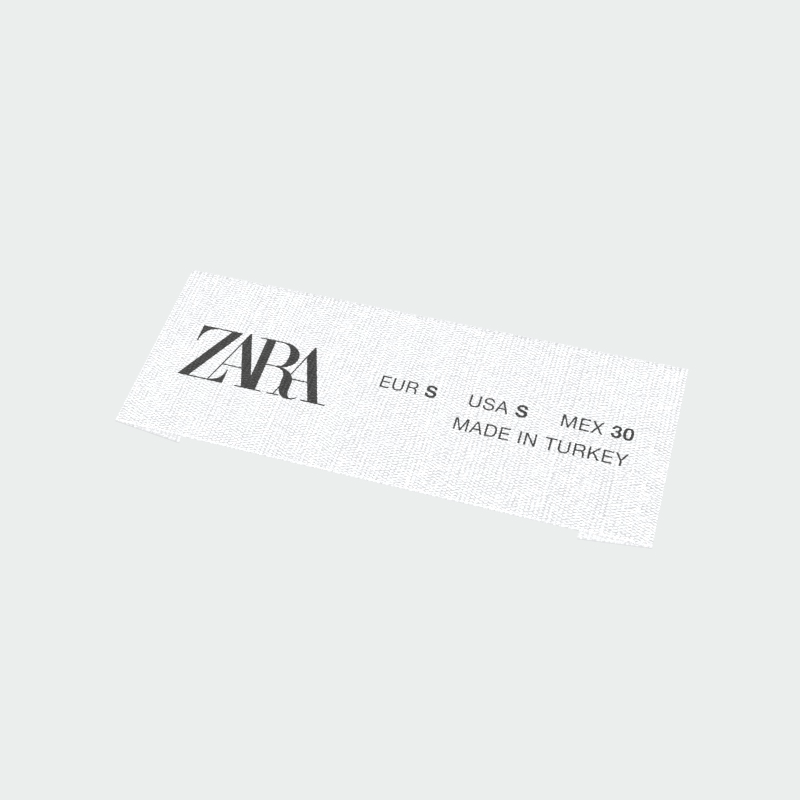
The result? Improved replenishment, reduced stockouts, faster checkouts, and better returns handling. Zara's model has become a benchmark for European retailers – especially in the context of growing expectations around digital transformation and sustainability.
Other major retailers – including Decathlon (we ourselves are delivering RFID labels to a number of Decathlon’s subcontractors across Europe), Tesco, and Metro AG – have followed suit with RFID trials or regional rollouts.
The regulatory turn: EU Digital Product Passport
On the legislative front, the European Union’s Digital Product Passport (DPP) initiative will radically change how products are labelled, traced, and recycled. Starting with batteries and electronics – and extending to textiles and packaging – the DPP will require manufacturers to provide accessible, machine-readable product information that includes sourcing, composition, and end-of-life guidance.
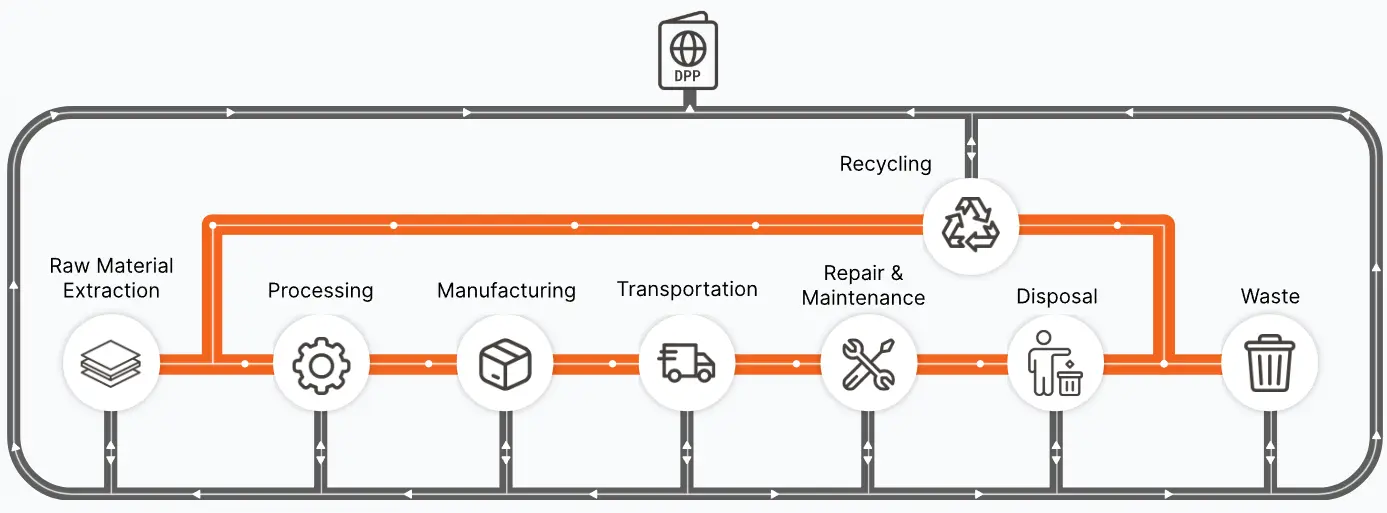
While the format of the DPP is still being finalised, most experts agree that smart labelling – particularly RFID or data-rich 2D codes – will be essential to meeting these requirements at scale. Labels must carry or link to data that is accessible across borders, throughout a product’s lifecycle.
Brands that invest in smart labelling today are not only future-proofing their compliance – they are building a framework for circular economy leadership.
Smart RFID labels: a proven and scalable technology
It is tempting to think of RFID UHF and NFC smart labels as futuristic or experimental. In truth, they are neither. These technologies have been commercially available for over two decades – and, today, they are mature, robust, and cost-effective.
The misunderstanding arises partly from history. In the early 2000s, the cost of RFID tags was high – often more than $0.50 per unit – and read reliability was inconsistent. For many companies, especially in low-margin sectors, the investment could not be justified.
Fast-forward to the present, and the picture has changed entirely.
Better performance, lower cost
Today, a typical UHF RFID tag costs around $0.05 when ordered at scale. NFC tags are still more expensive – especially those with higher memory capacity or advanced cryptographic features – but even these have seen price reductions of over 70% in the last decade.
Performance has improved in parallel. Modern RFID tags:
- have longer read ranges, often up to 10 metres for UHF;
- offer faster read speeds – thousands of tags per second;
- are more resistant to interference from liquids and metals; and
- can be produced in flexible or eco-friendly materials, including compostable adhesives.
Meanwhile, reader technology has become more compact, affordable, and versatile. From handheld devices to ceiling-mounted gateways and smart shelves, there are solutions for almost every environment – retail, warehouse, healthcare, industrial, or hospitality.
The flexibility of RFID UHF/NFC integration also means it is suitable for high-volume product lines, limited editions, or seasonal promotions – with full support for variable data printing, tamper-evident features, and graphical customisation.
The right tag for the right job
It is important to understand that not all smart labels are created equal – and that is precisely their strength.
- UHF RFID is optimal for long-range identification and high-speed inventory tracking, such as in warehouses, factories, logistics and retail stockrooms.
- HF RFID and NFC are suited to short-range interactions, particularly where security or consumer engagement is important – such as with medical devices, spirits, cosmetics, or loyalty-enabled packaging.
Many tags now support dual-frequency operation or sensor integration (eg temperature, moisture, motion), extending their use into cold chain logistics, quality assurance, and sustainability monitoring.
Smart labels are not a monolithic solution. They are a modular technology – with options to fit your precise needs and budget.
Why now is the time to act
Smart labelling is no longer a theoretical possibility. It is a commercially viable solution with a growing list of proven use cases, and the momentum behind it is stronger than ever. Yet many companies still hesitate – unsure whether the time is right to invest.
So let us be clear: the time to act is now.
First movers already have an advantage
Companies that embraced RFID early – such as Zara, Decathlon or OTACA Tequila – now enjoy real strategic benefits:
- inventory accuracy of up to 99 per cent;
- improved sell-through and full-price sales;
- protection against counterfeiting;
- real-time visibility for compliance and audit trails; and
- personalised consumer engagement at the point of use.
These brands are not merely complying with requirements – they are building loyalty, streamlining operations, and creating new marketing channels. Meanwhile, late adopters are left playing catch-up.
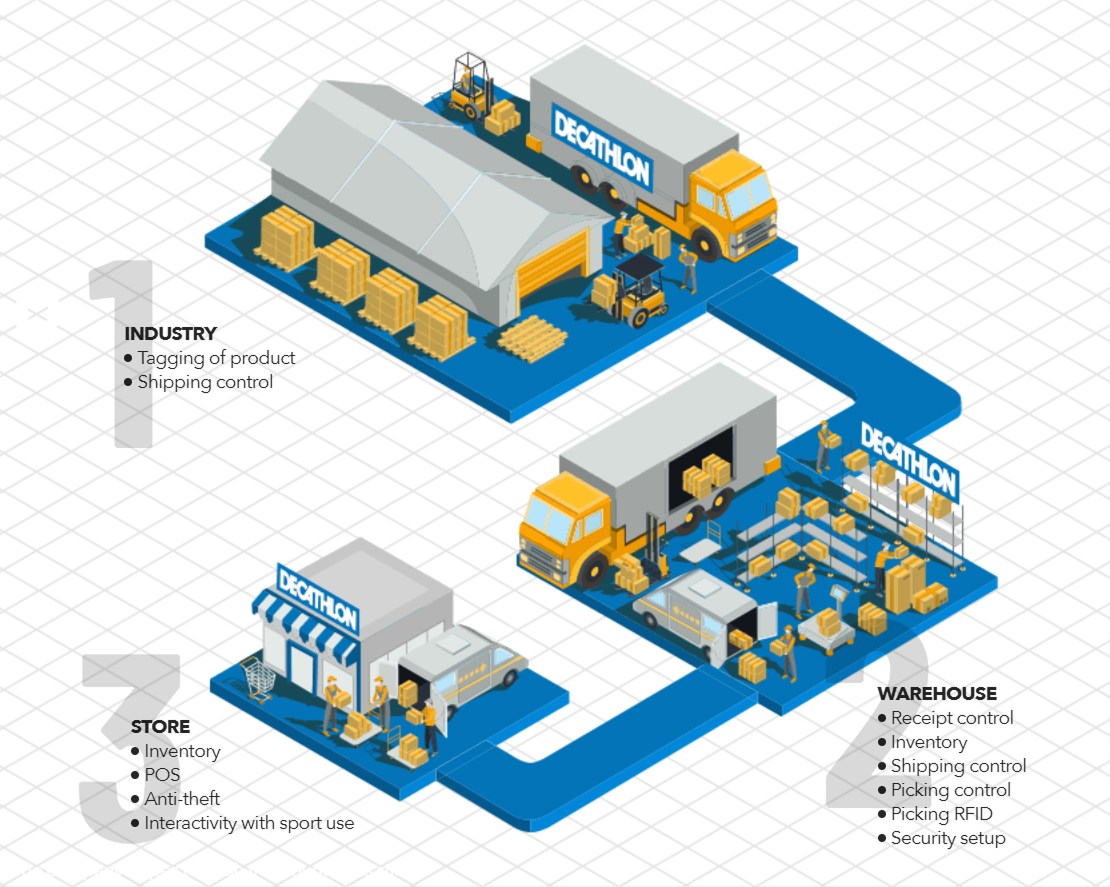
Delaying means rising costs – and falling relevance
The cost of postponing a smart labelling strategy is rarely calculated – but it is real.
- Manual inventory takes longer and consumes more labour.
- Barcodes can be misread or damaged, leading to stock errors.
- Promotional campaigns remain generic, not personalised.
- Products are vulnerable to counterfeiting or diversion.
- Supply chains are opaque, reactive, and exposed to disruption.
Even without regulation, the business case for smart labelling is strong. With regulatory frameworks such as the EU DPP on the horizon, delay becomes not only costly but risky.
Technology has never been more accessible
As noted earlier, prices are down, standards are mature, and reliable partners are available. Integration with existing ERP systems, packaging lines, and fulfilment workflows is well understood. From pilot to production, implementation timelines can be measured in weeks – not years.
RFID smart labels are already delivering value to organisations of every size. There is no longer a technical or financial reason to wait.
The real question is this: what could your organisation gain by acting now?
A note on opportunity
Thus far, we have framed smart labelling as a response – to market demands, operational inefficiencies, and regulatory change. However, the most exciting aspect of RFID labelling is not what it solves, but what it enables.
Smart labels are not merely defensive. They are tools of innovation.
By embedding intelligence into packaging, products become interactive, traceable, and data-generating. They are no longer passive objects, but active participants in customer journeys, supply networks, and digital ecosystems.
Let us consider just a few examples of opportunities that smart labels unlock.
Brand storytelling and consumer intimacy
With NFC-enabled packaging, a consumer can tap a bottle, box, or label and be taken to a dynamic, personalised digital experience. This could be a provenance video, a usage tutorial, loyalty integration, or augmented reality (AR) content.
Unlike QR codes, which are often generalised and publicly visible, NFC offers secure, unit-specific interaction. Each label can carry a unique ID, enabling tailored content based on location, purchase history, or even product state (eg opened/unopened).
This level of personalisation builds emotional connection – and measurable results. Brands that have implemented NFC on packaging have reported increases in repurchase rates, mobile engagement, and earned media coverage.
Real-time product lifecycle management
Smart labels allow companies to monitor where a product is, how it is being stored, and even how it is being used. RFID-based systems can generate automatic alerts when:
- inventory drops below a threshold;
- temperature-sensitive goods leave a controlled range; or
- a product is opened or tampered with.
This creates new levels of visibility and accountability across the supply chain. In sectors like pharmaceuticals, cold chain food, chemicals, or medical devices, such monitoring is not merely a convenience – it is a necessity.
Analytics and intelligence
The data generated by smart labels – including scans, taps, movements, and interactions – can feed into broader business intelligence systems. This data can answer questions such as:
- Which regions engage most with promotional campaigns?
- How often are customers interacting with a package post-purchase?
- What inventory is ageing on shelves and where?
These insights enable better planning, targeting, and decision-making. The packaging becomes a source of continuous feedback – one that reflects actual behaviour rather than assumptions.
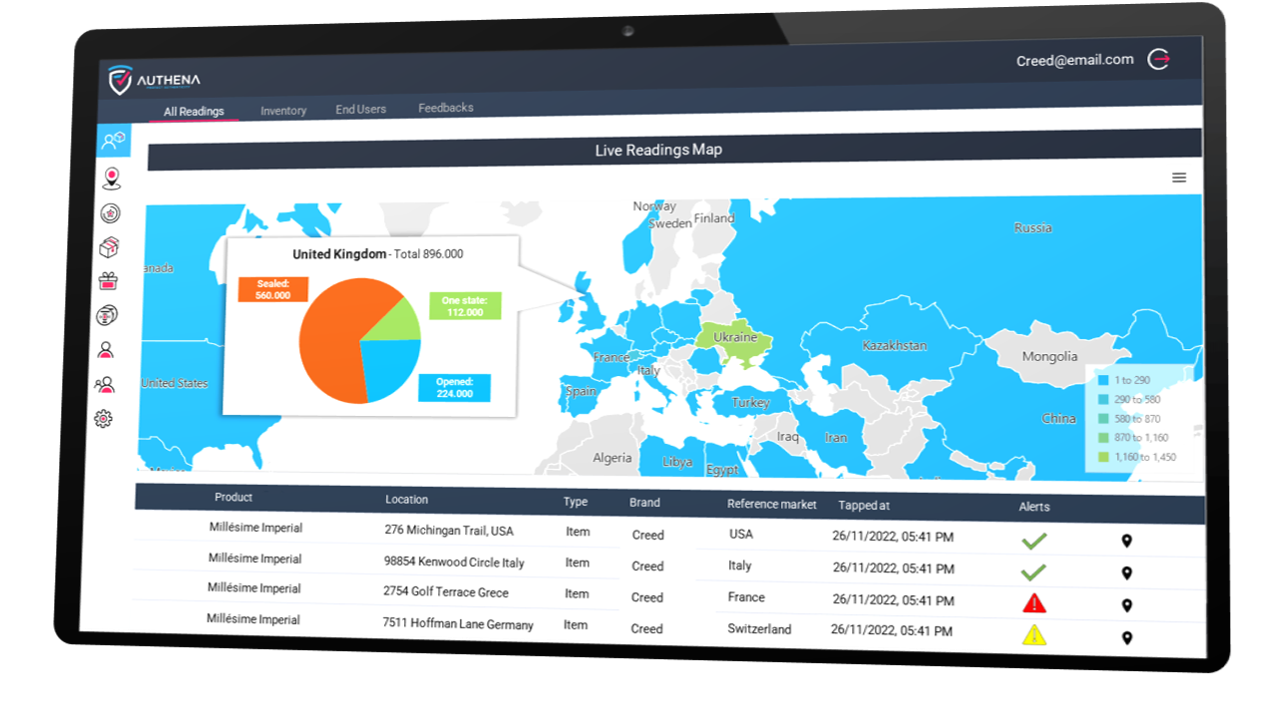
Sustainability and trust
With increasing scrutiny on green claims and ethical sourcing, smart labels can serve as a verifiable ledger of sustainability credentials. Embedded or linked data can document:
- the origin of raw materials;
- carbon footprint calculations;
- recycling instructions specific to local contexts; and
- social impact certifications (Fairtrade, B Corp etc).
This goes far beyond green graphics or vague claims. It enables auditable proof – something both consumers and regulators are starting to require.
Platform for the future
Finally, smart labels offer a platform for future capabilities. With the coming convergence of blockchain, IoT, and AI, tomorrow’s labels may:
- track carbon credits;
- interface with smart appliances;
- issue product updates or recalls automatically; and
- support resale, sharing, or recycling ecosystems.
Companies that begin investing in smart packaging now are laying the groundwork for this future. They will not need to retrofit their systems – they will already be ready.
Call to action
The case for smart labelling is not hypothetical – it is supported by hard numbers, live examples, and shifting expectations. Brands across industries, continentsm and business models are deploying RFID to:
- improve operational efficiency;
- increase transparency and traceability;
- build trust with consumers;
- comply with regulation; and
- create memorable digital experiences.
The tools are mature. The costs are manageable. The potential is vast.
So, where do you begin?
Step 1: Define your objective
Not every brand will adopt smart labelling for the same reason. Some seek to enhance supply chain visibility. Others aim to fight counterfeiting. Still others are interested in customer engagement or sustainability.
Clarity of purpose is the first requirement. What business problem are you solving – or what opportunity are you seizing?
Step 2: Choose the right partner
Implementing RFID UHF or NFC labels requires more than just buying tags. It involves:
- selecting the right chip type and frequency;
- matching inlays to label materials and application methods; and
- ensuring integration with your packaging lines and backend systems.
That is why your RFID partner matters. You need someone who understands not just printing, but data, substrates, encoding, testing, and field performance.
Here at Comex RFID, we specialise in high-quality, application-specific smart labelling solutions – from unit-level NFC for luxury packaging, to bulk RFID for high-throughput operations.
Being the first Polish and third European self-adhesive label printing company with a complete RFID manufacturing line, we can both produce our own inlays as well as integrate them into in-house printed self-adhesive labels. We can also convert your labels, if that’s what you’re looking for.
We work and have long-stanging partnerships with industry leaders such as Avery Dennison, Tageos, SATO, Zebra, Kathrein, and UPM Raflatac to name just a few, and we support customers throughout Europe with short lead times, rigorous quality control, and full implementation support.
Step 3: Start small – but start soon
You do not need to overhaul your packaging overnight. Many successful programmes begin with:
- a limited pilot, such as a single product line or SKU;
- an internal logistics use case, such as warehouse visibility; or
- a short-term promotional campaign using NFC.
These small projects create learning, buy-in, and momentum. From there, scaling is easier – and often self-financing, once ROI is demonstrated.
Step 4: Prepare for growth
Once you start, it is important to think ahead. How will you scale across SKUs, regions, or languages? What data will you capture, and how will you use it? What systems will need integration?
We can help you map this path – with clarity, realism, and confidence.
Closing thought
Smart labels are not just an upgrade to packaging – they are a doorway to better business. Whether your priority is efficiency, trust, engagement, or innovation, RFID UHF and NFC can help you achieve it.
The only question is: what will your label say?





